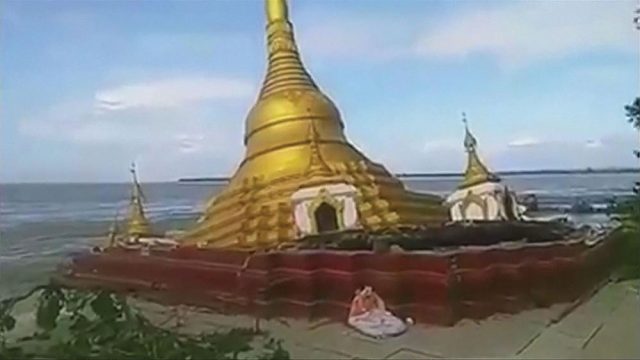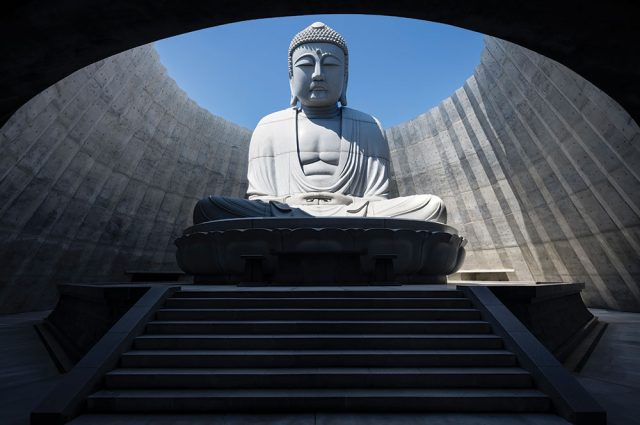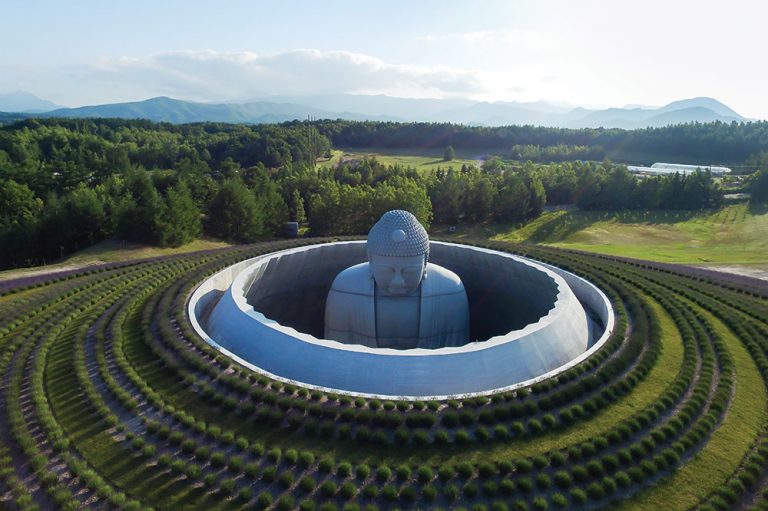Sinking Stupa
Onlookers in central Myanmar caught a Buddhist pagoda’s final moments on camera as it sank into the Irrawaddy River this summer. Recent rainstorms had weakened the riverbank and destabilized the stupa’s foundation, causing it to slip into the water.
Abbot U Pyinnya Linkkara filmed the stupa’s descent. He noted that it had been far from the riverbank when it was built in 2009, but that over the course of the past few years the monsoon season’s heavy rainfall caused major erosion. Thousands of people in Myanmar have been displaced because of this year’s flooding. It appears that no one was hurt as the structure fell into the river, but onlookers were still heartbroken to see the temple go: the video captured visitors’ wails.
Watch the stupa slide into the river here.

When Monks Get Audited
After a rash of financial scandals in Thai Buddhist temples—as well as even more serious crimes (such as murder)—the country’s military junta has proposed a law requiring Buddhist organizations, including the Office of National Buddhism, the government department that oversees Buddhist temples, to publicize their financial records. In the past, financial reporting had been enforced only in temples known to receive large amounts in donations. The government has also passed a measure requiring ordained Buddhist monks to carry a chip-embedded ID card that includes information about the monk’s temple, ordination date, and criminal history. This will replace the paper cards that monks carry now, which are easy to fake.
Thailand’s temples receive well over $3 billion a year in donations, a portion of which is presumably tied up in the recent criminal activities. The government has sought to extend control over the Buddhist organizations in the wake of a 23-day police seizure in winter 2017 of Wat Phra Dhammakaya, a wealthy center near Bangkok, whose abbot has been accused of money laundering. Hopefully, some transparency will set these bad Buddhists straight.

Death in the Time of Digital
In June 2017, pet owners in Japan held a memorial for a very special group of deceased pets, although decommissioned may be a more appropriate way to describe them: the funeral was for one hundred canine robots.
Artificial Intelligence Robot (AIBO) was a product line of digital pets, most of them dogs, released by Sony between 1999 and 2006. (Aibo means “companion” or “friend” in Japanese.) They were popular among the elderly in Japan, which has a rapidly aging population.
When Sony discontinued product support in 2014, the pet owners were devastated, as the pups perished without repairs. In order to honor their furless friends, they hired a priest to recite sutras for the pets at Kofukuji, a temple east of Tokyo.
It is Japan, though, so perhaps they should have hired Pepper, a 4-foot-tall humanoid bot recently programmed to conduct Buddhist funerals. Pepper was released by Aldebaran Robotics and SoftBank in 2014 to interact with humans; he can read emotions and recognize voice tones, among other skills. He has worked in the past as a receptionist, bank assistant, and home helper, but in his new role Pepper chants sutras, plays a drum, and reads scripture. He’s just like a priest, but he costs less to hire: his fee for services is only $450, compared with the $2,200 human Buddhists charge.
Ashes for Amida
Every ten years, Isshin Temple in Osaka, Japan, honors the dead with a unique piece of art. They mix cement, water, and the ashes of thousands whose remains were left to the temple to create an ornate Kotsubutsu, or bone buddha, in the figure of Amida, the Buddha of infinite light, who presides over the Pure Land school. This year, the statue stood over eight feet tall and contained the ashes of 223,302 people—a record number. (The 2007 statue contained the ashes of about 160,000.)
Although the tradition of creating bone buddhas dates to 1887, only seven figures remain. The first six were destroyed during air raids in WWII. The remains of more than two million people from many Buddhist traditions have been used in Kotsubutsu worldwide.

The Oldest Manuscript of Them All
In 2017, the University of Cambridge exhibited what is believed to be the oldest dated and illustrated Sanskrit manuscript in existence, a thousand-year-old text that outlines the bodhisattva path and describes the nature of reality.
The palm-leaf Ashtasahasrika Prajnaparamita (The Perfection of Wisdom in 8,000 Lines) was likely written in central or southern India and completed in the year 985 CE, though a scholarly consensus hasn’t been reached on either fact. Of the 227 leaves, 5 have illustrations, 3 on each leaf, for a total of 15 illuminations featuring tiny, colorful scenes from the Buddha’s life, including his birth and first teaching. The papers are well-preserved—even the small string holes they would have been bound with are still visible—and the manuscript still has its original wooden covers. It is currently held in the Manuscripts Room of Cambridge University Library.

Lavender Landscape
The esteemed, self-taught Japanese architect Tadao Ando has a noble new client. The Buddha’s Head, or Atama Daibutsu, is a 43-foot-tall stone figure of the Buddha at Makomanai Takino Cemetery in Sapporo, northern Japan, that has stood unadorned on the cemetery grounds for the past 15 years. Cemetery officials wanted to make the statue more captivating for visitors, so they asked Ando to devise a solution. His fix? Constructing a gigantic hill around the Buddha, creating a womblike tunnel for visitors to approach its base. Ando planted 150,000 lavender blooms over the hilltop, which will change colors along with the seasons. Now only the top of the Buddha’s head is visible above ground, but the stress-relieving scent of lavender—at least when the flowers are in bloom—will greet visitors from afar.
Thank you for subscribing to Tricycle! As a nonprofit, we depend on readers like you to keep Buddhist teachings and practices widely available.
